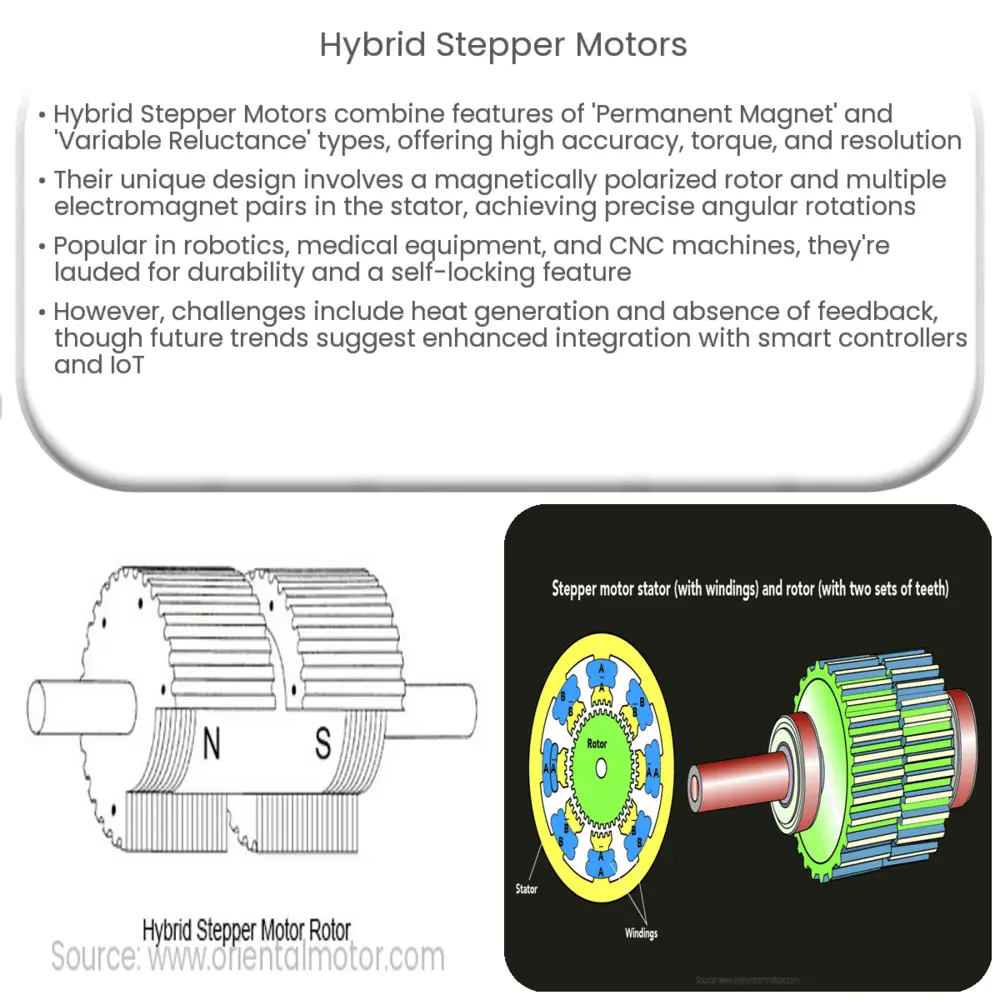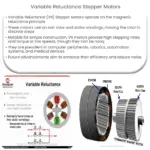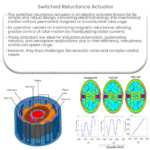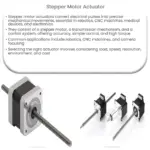Explore the intricacies of Hybrid Stepper Motors – their design, working principle, benefits, drawbacks, and future prospects in this comprehensive article.

Introduction to Hybrid Stepper Motors
Hybrid Stepper Motors are a subtype of the broader stepper motor category, offering unique features and applications. With a name derived from its structure, the Hybrid Stepper Motor marries the benefits of both ‘Permanent Magnet’ and ‘Variable Reluctance’ stepper motor types.
Design and Working Principle
A Hybrid Stepper Motor employs a rotor made up of multiple teeth, enhancing the motor’s ability to provide higher resolution step increments and performance. The rotor is magnetically polarized, usually with a permanent magnet, to enable the stepping action of the motor. The stator, on the other hand, comprises multiple electromagnet pairs which, when energized, interact with the rotor teeth to generate the stepping action.
Under the hood, Hybrid Stepper Motors operate on the principle of electromagnetic attraction and repulsion. Each step corresponds to a precise angular rotation, with the motor’s ‘step angle’ typically being significantly smaller than other stepper motor types, resulting in a higher resolution.
Key Features
- High Accuracy: Hybrid stepper motors deliver superior precision and positional accuracy due to their design.
- Torque: They offer higher torque compared to other stepper motors, particularly at lower speeds.
- Resolution: Given their smaller step angle, hybrid stepper motors provide higher resolution, allowing for more precise control.
Applications of Hybrid Stepper Motors
The combination of high torque, accuracy, and resolution makes Hybrid Stepper Motors a popular choice in numerous industrial and commercial applications. These include:
- Robotics: Due to their precision and control, hybrid stepper motors are often used in robots, especially those requiring exact movements.
- Medical Equipment: The high degree of control afforded by these motors is invaluable in medical devices like MRI machines, CT scanners, and insulin pumps.
- CNC Machines: CNC machines demand precise control over the motor movement, which is provided by the high resolution of hybrid stepper motors.
In conclusion, Hybrid Stepper Motors are a reliable, versatile, and high-performing motor type that forms an essential component in numerous technological and industrial applications. Their high resolution, torque, and positional accuracy make them an indispensable part of modern machinery.
Benefits and Drawbacks of Hybrid Stepper Motors
Like any technology, Hybrid Stepper Motors have both advantages and disadvantages that are worth considering.
Benefits
- Durability: These motors are known for their robustness and durability, often withstanding harsh environments and extended use.
- Self-Locking: Due to their magnetic design, these motors can hold their position even when not powered, a feature known as ‘self-locking’.
- Direct Drive: The direct drive mechanism of these motors allows for simpler mechanical designs by eliminating the need for additional gearboxes or belts.
Drawbacks
- Heat Generation: Hybrid Stepper Motors can generate significant heat during operation, which may require additional cooling measures in certain applications.
- No Feedback: As is common with most stepper motors, hybrid models do not inherently provide feedback about their position, potentially leading to errors if steps are missed.
Future of Hybrid Stepper Motors
With advancements in technology, Hybrid Stepper Motors are seeing continuous improvements in their design and function. Future trends indicate a move towards integrating these motors with smart controllers and IoT devices, thereby enhancing their performance and offering real-time feedback options.
Conclusion
In essence, Hybrid Stepper Motors combine the best of two worlds, offering high precision, excellent torque, and high resolution, making them ideal for applications demanding precise control. Although they have certain drawbacks like heat generation and lack of feedback, advancements in technology and improved designs promise to mitigate these issues. Their integration into smart devices and systems points to a promising future, wherein these motors continue to be a vital component in a variety of industries. The durability, accuracy, and versatility of Hybrid Stepper Motors underline their importance in today’s technologically driven world and their potential to shape the future of many industries.




